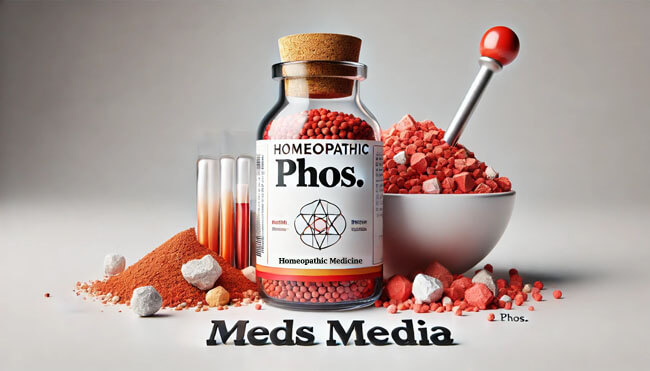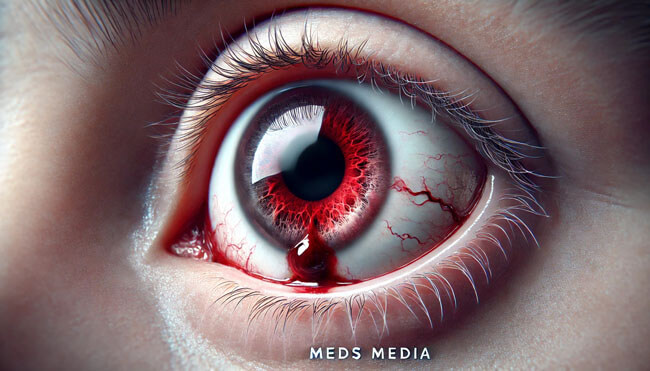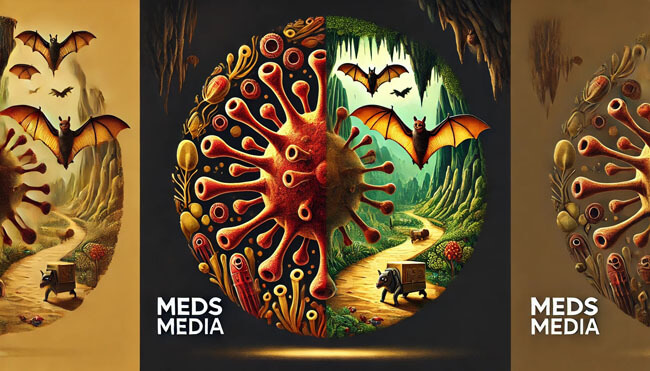Introduction to Nosode Therapy
Nosode Therapy is a specialized branch of homeopathy that utilizes remedies prepared from pathological specimens, such as diseased tissues, bodily discharges, or microorganisms. These remedies, known as “nosodes,” are employed in treating chronic diseases, particularly those believed to have a connection to the original pathogen or disease product from which the nosode is derived.
In homeopathy, nosodes are prepared through a process of serial dilution and succussion (vigorous shaking), which is believed to imprint the energetic essence of the disease material while eliminating any toxic effects. The concept behind nosode therapy is based on the principle of “like cures like” — that a substance causing symptoms in a healthy person can be used to treat similar symptoms in a sick person when prepared homeopathically.
How Nosode Therapy Works
Nosode therapy works by stimulating the body’s vital force, encouraging it to react against the chronic condition or susceptibility to the disease represented by the nosode. Unlike vaccines, which are designed to prevent disease by inducing immunity, nosodes are used to address existing chronic conditions or inherited predispositions. The therapy aims to correct the underlying imbalance in the body that is associated with the chronic disease or pathogen.
Key Mechanisms of Nosode Therapy:
- Miasmatic Treatment: Nosodes are often used to address miasms, which are underlying predispositions to chronic diseases believed to be inherited or acquired. Homeopathic theory identifies three primary miasms: Psora, Syphilis, and Sycosis. Nosodes are used to target these miasms, thereby helping to alleviate deep-seated chronic ailments.
- Energetic Signature: Nosodes carry the energetic imprint of the disease or pathogen without containing the actual material substance. This energetic signature is thought to stimulate the body’s defense mechanisms, aiding in the resolution of chronic conditions that are otherwise difficult to treat.
- Symptom Similarity: In line with the homeopathic principle of similars, nosodes are chosen based on the symptomatology they cover, often corresponding to the symptoms caused by the original disease or pathogen. This similarity is believed to guide the body’s healing response.
The Psychological Aspect of Nosode Therapy
Nosode therapy delves deep into the psychological and emotional layers of chronic diseases. It’s not just about treating physical symptoms; it’s about addressing the psychological imprint left by the disease, infection, or miasm. Chronic diseases often have a psychological component, and nosodes work by triggering the body’s healing response, not just on the physical level but also on the mental and emotional planes.
Psychological Insights into Nosode Therapy:
- Unconscious Influences: Nosodes often bring to light deep-seated fears, traumas, and unresolved emotional conflicts associated with the disease or its miasm. For example, Syphilinum may bring up issues related to guilt, secrecy, or self-destruction, which are often found in individuals suffering from syphilitic miasms.
- Miasmatic Burdens: The concept of miasms in homeopathy suggests that certain chronic diseases have been passed down through generations, affecting both the physical body and the psyche. Nosodes help to address these inherited patterns, freeing the individual from the psychological burden of ancestral diseases.
- Restoring Balance: Chronic diseases can lead to an imbalance in the emotional and mental states, resulting in anxiety, depression, or other psychological conditions. Nosode therapy aims to restore equilibrium, not just physically but also emotionally, by addressing the root cause at a deeper, often subconscious, level.
The Stages for Using Nosode Therapy
Nosode therapy is generally not the first line of treatment in homeopathy but is used strategically at certain stages of a patient’s healing journey:
- When the Constitutional Remedy Stalls: Often, a constitutional remedy is prescribed based on the totality of the patient’s symptoms. If the healing process reaches a plateau or the symptoms seem to persist without further improvement, a nosode may be introduced to clear any miasmatic blockages.
- As an Intercurrent Remedy: Nosodes are frequently used as intercurrent remedies—medicines given between doses of the main remedy to break through therapeutic standstills. For example, if a patient’s symptoms point to a particular miasm, a corresponding nosode can be administered to accelerate the healing process.
- In Chronic and Recurrent Conditions: Nosodes are especially valuable in treating chronic and recurrent conditions where there is a clear history of the disease or miasmatic involvement. For example, Tuberculinum may be used in a patient with a recurring pattern of respiratory infections linked to a tubercular miasm.
- When Treating Miasms: Nosodes play a critical role in addressing the deeper, underlying miasmatic influences that contribute to chronic illness. In cases where a patient’s symptoms are clearly tied to one of the primary miasms (Psora, Sycosis, Syphilis), nosodes can be used to help remove these deep-rooted predispositions.
- In Preventive Care: While not as common as in treatment, nosodes are sometimes used prophylactically to prevent the onset of chronic conditions, especially in cases where there is a strong family history of certain diseases or miasms.
Challenges and Considerations
The use of nosodes requires a deep understanding of both the remedy and the patient’s miasmatic history. Misuse or inappropriate selection of a nosode can potentially aggravate symptoms rather than alleviate them. Therefore, nosode therapy should ideally be conducted by experienced homeopaths who can carefully assess the patient’s needs and determine the right nosode and dosage.
List of Nosode Therapy Medicines: Key Remedies
1. Syphilinum (Luesinum)
- Source: Derived from the syphilis bacterium.
- Uses: Chronic syphilitic miasms, insomnia, recurrent ulcers, severe headaches, and deep bone pains.
2. Medorrhinum
- Source: Derived from gonorrheal discharge.
- Uses: Sycosis miasm, chronic rheumatism, urinary disorders, and conditions with a history of gonorrhea.
3. Tuberculinum
- Source: Derived from tuberculosis-infected tissue.
- Uses: Tubercular miasm, chronic respiratory conditions, recurrent colds, bronchitis, and asthma.
4. Psorinum
- Source: Derived from scabies discharge.
- Uses: Psoric miasm, chronic skin conditions, eczema, asthma, and hypersensitivity to cold.
5. Carcinosinum
- Source: Derived from cancerous tissue.
- Uses: Predisposition to cancer, chronic fatigue, insomnia, and a history of severe suppression of emotions.
6. Pertussin (Whooping Cough Nosode)
- Source: Derived from the Bordetella pertussis bacterium.
- Uses: Chronic cough, respiratory conditions, and a history of whooping cough.
7. Influenzinum
- Source: Derived from various strains of the influenza virus
- Uses: Chronic susceptibility to flu, post-influenza fatigue, and recurrent respiratory infections.
8. Bacillinum
- Source: Derived from tuberculous sputum.
- Uses: Tubercular miasm, chronic bronchitis, pneumonia, deep-seated respiratory infections and cough.
9. Anthracinum (Anthrax Nosode)
- Source: Derived from anthrax-infected tissue.
- Uses: Anthrax, deep abscesses, and malignant pustules.
10. Lyssin (Hydrophobinum)
- Source: Derived from rabid dog saliva.
- Uses: Rabies-related symptoms, hydrophobia, and behavioral disturbances.
11. Pyrogenium
- Source: Derived from decomposed animal tissue (septic material).
- Uses: Septic conditions, blood poisoning, fevers with chills, and infections with putrid discharges.
12. Morbillinum (Measles Nosode)
- Source: Derived from the morbillivirus (measles virus).
- Uses: Chronic after-effects of measles, respiratory issues, and skin eruptions.
13. Variolinum (Smallpox Nosode)
- Source: Derived from the smallpox virus.
- Uses: Chronic skin conditions, pustular eruptions, and history of smallpox or vaccination reactions.
14. Scarlatinum (Scarlet Fever Nosode)
- Source: Derived from the scarlet fever bacterium (Streptococcus pyogenes).
- Uses: After-effects of scarlet fever, sore throat, skin rashes, and febrile conditions.
15. Diphtherinum
- Source: Derived from the diphtheria toxin.
- Uses: Chronic throat infections, respiratory problems, and sequelae of diphtheria.
16. Typhoidinum
- Source: Derived from the typhoid bacillus (Salmonella typhi).
- Uses: Chronic gastrointestinal issues, fevers, and complications following typhoid fever.
17. Pneumococcinum
- Source: Derived from the pneumococcus bacterium (Streptococcus pneumoniae).
- Uses: Respiratory conditions, pneumonia, pleurisy, and chronic bronchitis.
18. Malaria Officinalis
- Source: Derived from malarial toxin.
- Uses: Chronic malaria, intermittent fevers, and conditions with periodicity.
19. Leptospirosis Nosode
- Source: Derived from Leptospira bacteria.
- Uses: Chronic infections, kidney disorders, and sequelae of leptospirosis.
20. Lathyrus Sativus (Polio Nosode)
- Source: Derived from the Lathyrus sativus plant, linked to polio.
- Uses: Neurological disorders, muscular weakness, and sequelae of polio.
21. Parotidinum (Mumps Nosode)
- Source: Derived from the mumps virus.
- Uses: Chronic after-effects of mumps, glandular swellings, and orchitis.
22. Sycosis
- Source: Derived from the gonorrheal discharge.
- Uses: Sycosis miasm, chronic rheumatic conditions, and conditions with overgrowths like warts.
23. Lyssin (Rabies Nosode)
- Source: Derived from the rabies virus.
- Uses: Behavioral disorders, fear, aggression, and rabies-related symptoms.
24. Histaminum
- Source: Derived from histamine.
- Uses: Allergic reactions, hay fever, hives, and chronic allergic conditions.
25. Crotalus Horridus (Snake Venom Nosode)
- Source: Derived from the venom of the rattlesnake (Crotalus horridus).
- Uses: Hemorrhagic conditions, blood poisoning, and septicemia.
26. Streptococcinum
- Source: Derived from Streptococcus bacteria.
- Uses: Strep throat, tonsillitis, and recurrent infections of the throat.
27. Cholera Nosode
- Source: Derived from the cholera bacterium (Vibrio cholerae).
- Uses: Gastrointestinal disorders, dehydration, and sequelae of cholera.
28. Plague Nosode (Yersinia Pestis)
- Source: Derived from Yersinia pestis, the bacterium causing the plague.
- Uses: Severe infections, bubonic plague symptoms, and related conditions.
29. Typhus Nosode
- Source: Derived from Rickettsia bacteria causing typhus.
- Uses: Chronic fatigue, relapsing fever, and conditions resembling typhus.
30. Colibacillinum
- Source: Derived from Escherichia coli (E. coli) bacteria.
- Uses: Gastrointestinal disorders, urinary tract infections, and colitis.
31. Salmonella Nosode
- Source: Derived from Salmonella bacteria.
- Uses: Food poisoning, gastroenteritis, and chronic intestinal issues.
32. Meningococcinum
- Source: Derived from Neisseria meningitidis (meningococcus).
- Uses: Chronic headaches, meningitis sequelae, and neck stiffness.
33. Candida Albicans Nosode
- Source: Derived from Candida albicans, a yeast-like fungus.
- Uses: Chronic candidiasis, yeast infections, and digestive disturbances.
34. Ringworm Nosode (Dermatophytosis)
- Source: Derived from dermatophyte fungi causing ringworm.
- Uses: Chronic fungal infections, skin conditions, and itching.
35. Sycotic Compound
- Source: Derived from a combination of various sycotic miasm remedies.
- Uses: Broad-spectrum use for sycotic miasm-related conditions, including warts, fibroids, and rheumatic issues.
36. Monilia Albicans Nosode
- Source: Derived from the Candida albicans fungus.
- Uses: Chronic yeast infections, digestive issues, and skin conditions.
37. Brucella Nosode
- Source: Derived from Brucella bacteria.
- Uses: Chronic infections, joint pain, and fever with sweating.
38. Psittacosis Nosode
- Source: Derived from Chlamydia psittaci, the bacterium causing psittacosis.
- Uses: Chronic respiratory conditions, fever, and flu-like symptoms.
39. Coxiella Burnetii Nosode (Q Fever)
- Source: Derived from Coxiella burnetii, the bacterium causing Q fever.
- Uses: Chronic fatigue, headache, and respiratory issues linked to Q fever.
40. Scirrhinum (Cancer Nosode)
- Source: Derived from cancerous tissues.
- Uses: Chronic conditions associated with cancer, cancer predispositions, and related systemic issues.
41. Miasm Nosode
- Source: Derived from various miasmatic conditions.
- Uses: Addressing underlying miasmatic influences in chronic diseases, often used in conjunction with other nosodes.
42. Tetanus Nosode
- Source: Derived from the tetanus bacterium (Clostridium tetani).
- Uses: Tetanus-related symptoms, muscle spasms, and wound infections.
43. Filarinum
- Source: Derived from filarial worms.
- Uses: Chronic filarial infections, lymphatic issues, and related systemic symptoms.
44. Rickettsia Nosode
- Source: Derived from Rickettsia bacteria.
- Uses: Typhus-like symptoms, rickettsial infections, and related conditions.
45. Brucellinum
- Source: Derived from Brucella bacteria.
- Uses: Brucellosis, chronic infections, fever with sweating, and joint pain.
46. Adenovirus Nosode
- Source: Derived from adenoviruses.
- Uses: Respiratory infections, conjunctivitis, and gastrointestinal symptoms.
47. Chlamydia Nosode
- Source: Derived from Chlamydia bacteria.
- Uses: Chronic infections, reproductive health issues, and related conditions.
48. Hepatitis Nosode
- Source: Derived from hepatitis viruses (e.g., Hepatitis B and C).
- Uses: Hepatitis-related liver issues, chronic hepatitis, and jaundice.
49. HIV Nosode
- Source: Derived from HIV (Human Immunodeficiency Virus).
- Uses: Immune system support, HIV-related conditions, and chronic infections.
50. Mycoplasma Nosode
- Source: Derived from Mycoplasma bacteria.
- Uses: Chronic respiratory issues, atypical pneumonia, and joint pain.
51. Hanta Virus Nosode
- Source: Derived from Hantavirus.
- Uses: Hantavirus pulmonary syndrome, renal issues, and chronic fatigue.
52. Ebola Nosode
- Source: Derived from the Ebola virus.
- Uses: Ebola virus symptoms, hemorrhagic fever, and related severe infections.
53. Lassa Virus Nosode
- Source: Derived from the Lassa virus.
- Uses: Lassa fever, hemorrhagic symptoms, and severe infections.
Insights into Nosode Therapy
Nosode therapy is a potent tool in the hands of experienced homeopaths, especially for chronic conditions that conventional treatments struggle to address. It offers a unique approach by targeting the root cause of disease through the energetic resonance of the nosode. This therapy is often used in conjunction with constitutional remedies to provide holistic care, addressing both the physical symptoms and the underlying miasmatic predispositions.
Nosodes are generally prescribed based on a detailed case analysis, including the patient’s history, miasmatic background, and the symptom picture. They can be used either as intercurrent remedies to clear blockages in treatment or as the main remedy when a clear nosode indication is present. This careful, individualized approach highlights the deep, transformative potential of nosode therapy within homeopathy.
Similar Posts

LM Potencies in Homeopathy Explained | Insights from the 6th Edition of the Organon
Zincum Picricum Homeopathic Medicine & Personality | Uses, Benefits & Indications
Zincum Phosphoricum Homeopathic Medicine & Personality | Uses, Benefits & Indications
Zincum Iodatum Homeopathic Medicine & Personality | Uses, Benefits & Indications
Zincum Bromatum Homeopathic Medicine & Personality | Uses, Benefits & Indications
Zea Homeopathic Medicine & Personality | Uses, Benefits & Indications
Zincum Aceticum Homeopathic Medicine & Personality | Uses, Benefits & Indications
Zincum Cyanatum Homeopathic Medicine & Personality | Uses, Benefits & Indications
Zincum Muriaticum Homeopathic Medicine & Personality | Uses, Benefits & Indications
Zincum Oxydatum Homeopathic Medicine & Personality | Uses, Benefits & Indications
Zincum Sulphuricum Homeopathic Medicine & Personality | Uses, Benefits & Indications

Phosphorus Homeopathic Medicine & Personality | Uses, Benefits & Indications
Causticum Homeopathic Medicine & Personality | Uses, Benefits & Indications

Blood Clot in Eyes: Symptoms, Homeopathic Treatment & Prevention

